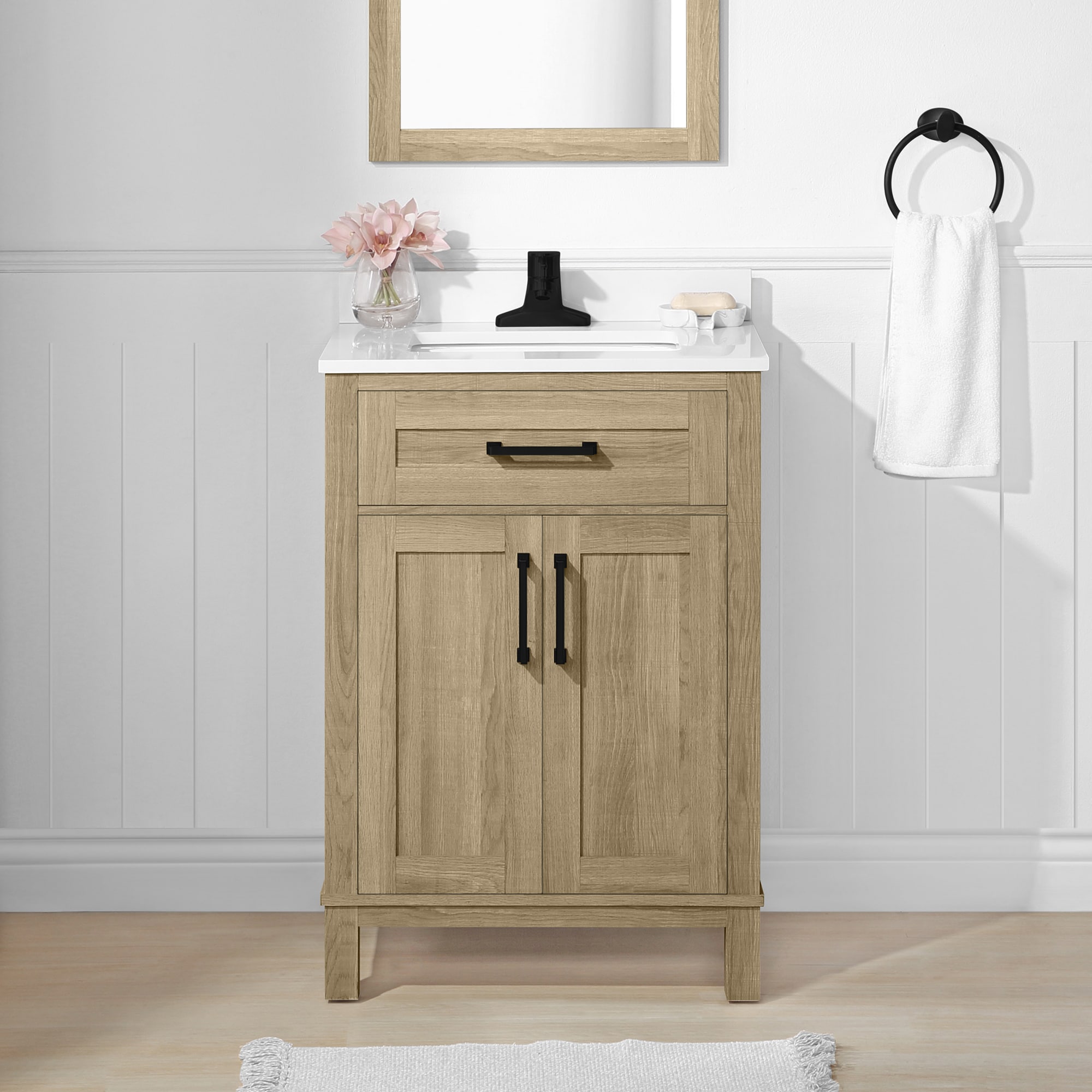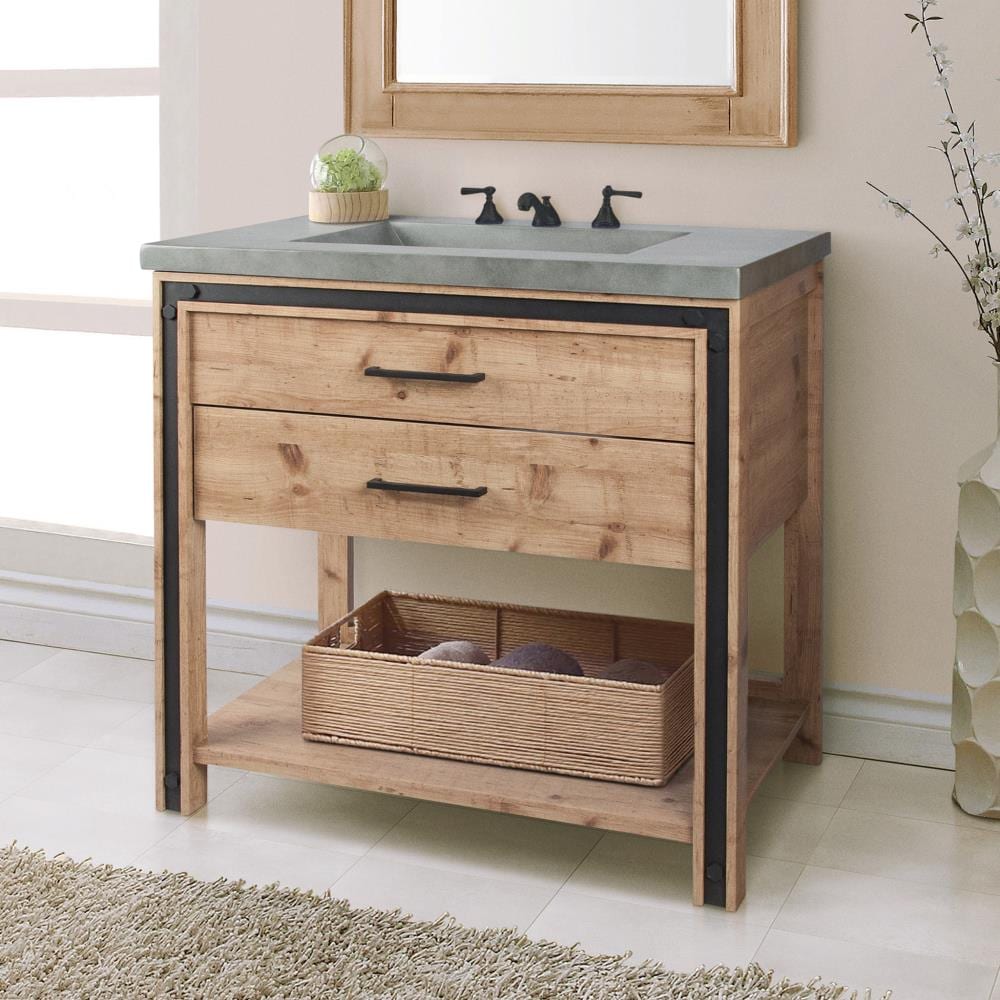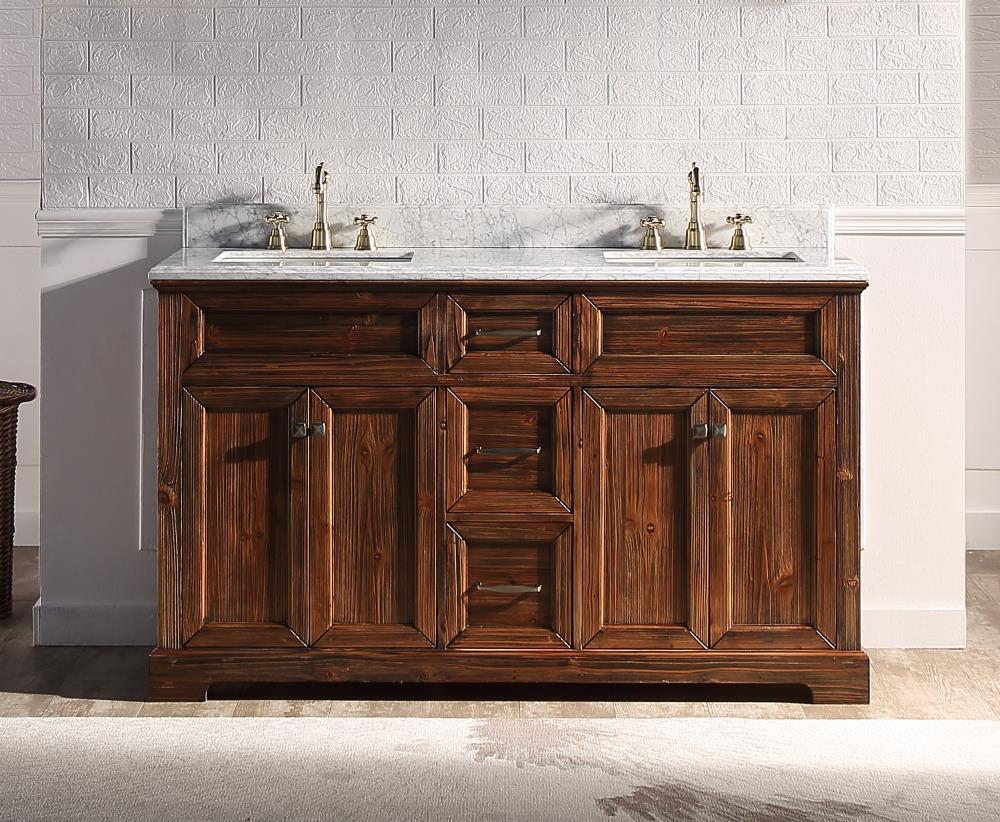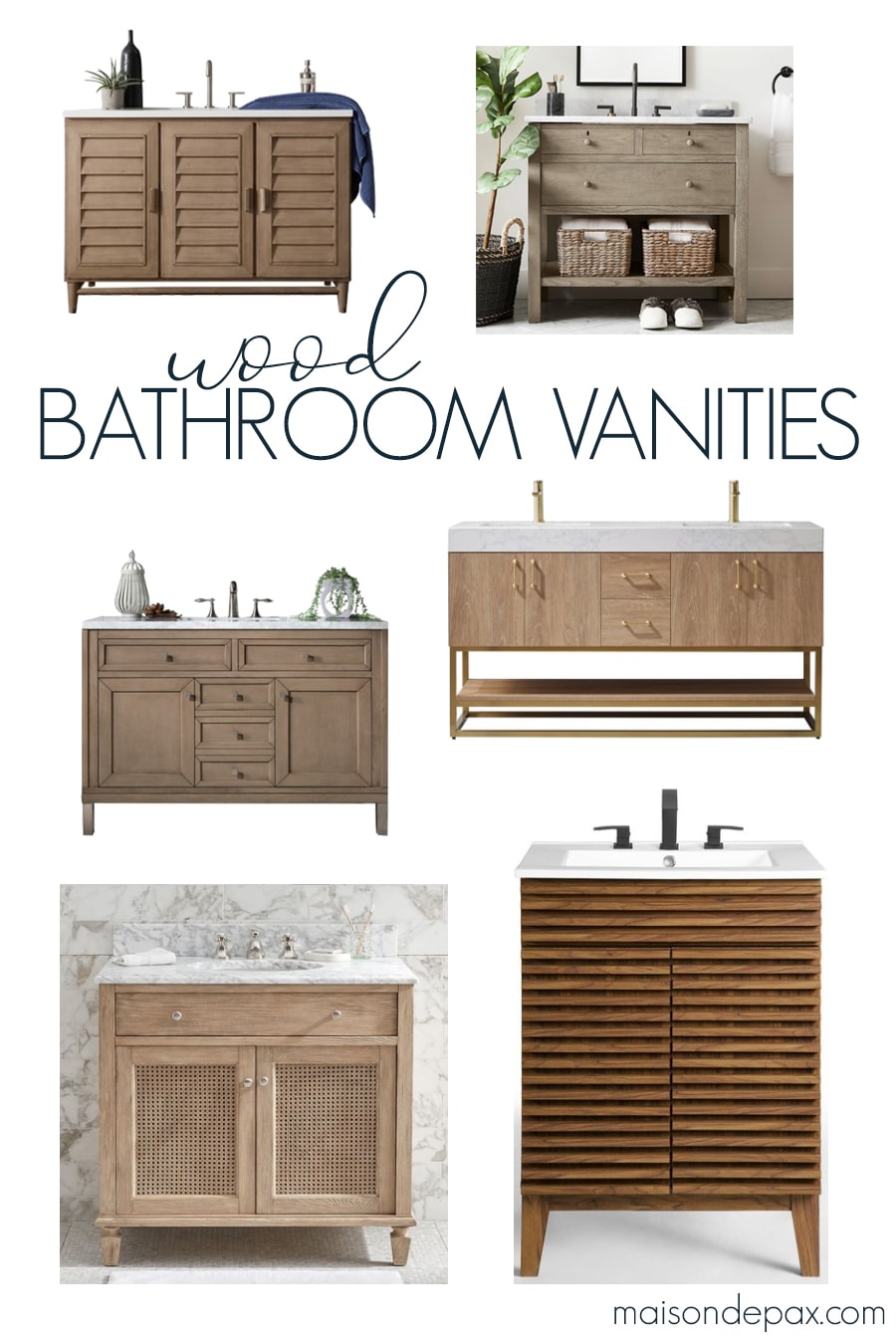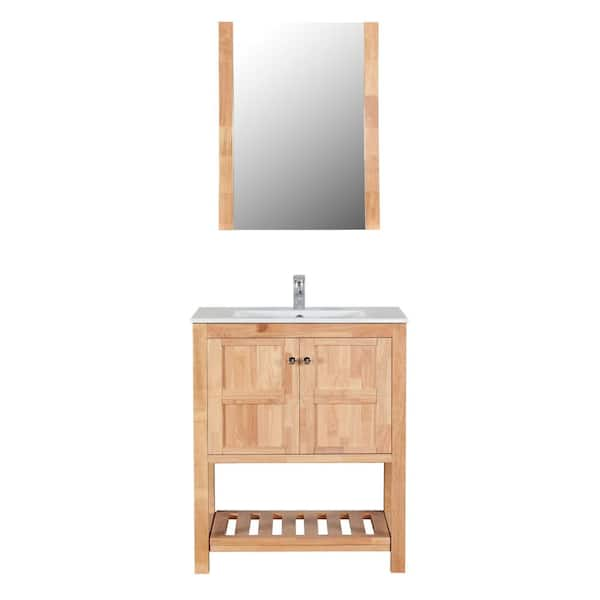Bathroom Vanity Natural Wood
The Eternal Charms of Natural Wood Bathroom Vanities
Natural wood bathroom vanities have a timeless appeal that transcends trends and adds a touch of nature to your bathroom decor. Their unique grains and warm tones create a cozy and inviting atmosphere, making your bathroom a serene retreat. Here’s why natural wood vanities continue to captivate homeowners and designers alike.
- Aesthetic Versatility: Natural wood vanities fit seamlessly into various design aesthetics, from rustic to contemporary. The organic textures and hues of wood add depth and character to any bathroom, whether you prefer a sleek modern look or a cozy, traditional vibe.
- Unique Characteristics: Each piece of natural wood is unique, boasting its distinct grain patterns and color variations. This uniqueness ensures that your bathroom vanity is a one-of-a-kind piece, adding a personalized touch to your home.
- Warmth and Comfort: Wood has an inherent warmth that can make a bathroom feel more inviting. Unlike cold, sterile materials, natural wood exudes a sense of comfort, making your bathroom a more pleasant place to unwind.
- Durability: When properly maintained, wood is incredibly durable and can withstand the rigors of a bathroom environment. High-quality wood vanities are crafted to resist moisture and wear, ensuring they remain beautiful and functional for years.
- Sustainability: Natural wood is a renewable resource, making it an eco-friendly choice. Many manufacturers source their wood responsibly, ensuring that your vanity is not only beautiful but also sustainable.
- Timeless Appeal: Trends come and go, but natural wood never goes out of style. Its classic look ensures that your bathroom vanity will remain stylish and relevant, no matter how design trends evolve.
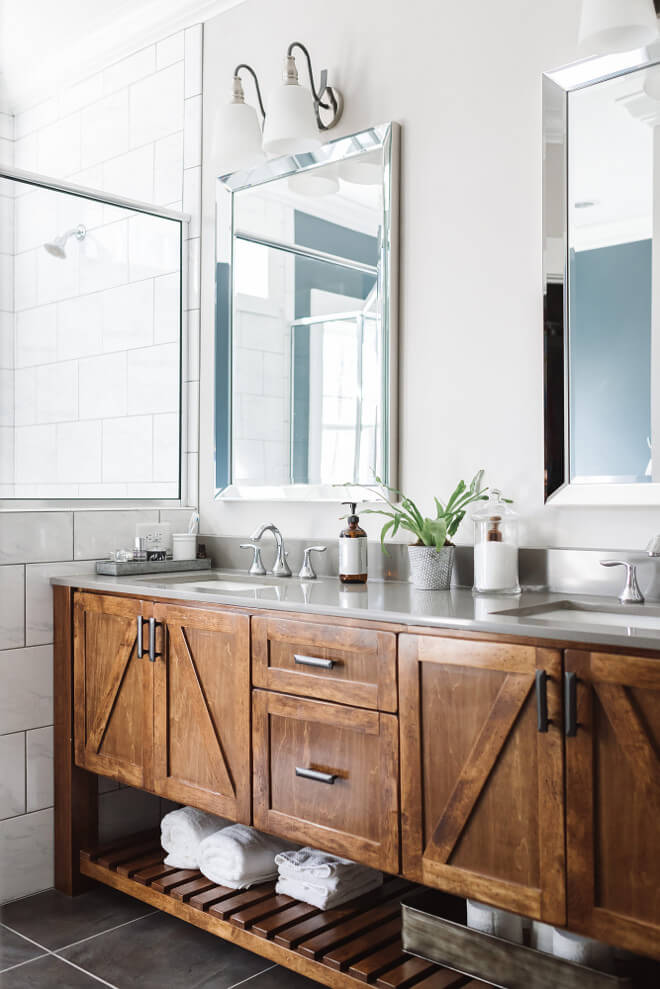
Choosing the Right Wood Type for Your Bathroom Vanity
Selecting the right type of wood for your bathroom vanity is crucial for both aesthetics and functionality. Each wood type has unique characteristics that can impact the look, feel, and durability of your vanity. Here’s a guide to help you choose the perfect wood for your bathroom vanity.
Oak: Known for its strength and durability, oak is a popular choice for bathroom vanities. Its prominent grain pattern adds texture and visual interest, making it suitable for both traditional and contemporary designs.
Maple: Maple wood has a smooth, fine grain that gives it a sleek appearance. Its light color can brighten up a bathroom, making it feel more spacious. Maple is also highly durable and resistant to moisture, making it a practical choice for humid environments.
Cherry: Cherry wood is prized for its rich, warm tones and smooth grain. It darkens over time, developing a beautiful patina that adds to its charm. Cherry wood vanities are perfect for creating a luxurious, elegant look in your bathroom.
Walnut: With its deep, rich color and straight grain, walnut is a stunning choice for a bathroom vanity. It adds a touch of sophistication and works well in both modern and traditional settings. Walnut is also durable, though it requires regular maintenance to keep its luster.
Teak: Teak is highly resistant to moisture, making it an excellent choice for bathroom vanities. Its natural oils protect it from water damage and pests. Teak’s golden-brown color and distinctive grain pattern add a touch of exotic elegance to your bathroom.
Bamboo: While technically grass, bamboo is a sustainable and durable material often used for bathroom vanities. It has a unique, contemporary look and is resistant to moisture and warping, making it a practical and eco-friendly option.
Design Styles: From Rustic to Modern Natural Wood Vanities
Natural wood bathroom vanities are versatile enough to complement a wide range of design styles. Whether you’re aiming for a rustic retreat or a sleek modern space, there’s a natural wood vanity that fits your vision. Here’s a look at how different design styles can be achieved with natural wood vanities.
Rustic Charm: Rustic wood vanities often feature reclaimed or distressed wood with a weathered finish. This style emphasizes the natural beauty and imperfections of the wood, creating a cozy, lived-in feel. Pairing the vanity with stone countertops and vintage fixtures can enhance the rustic look.
Modern Minimalism: For a modern bathroom, choose a wood vanity with clean lines and a minimalist design. Light woods like maple or bamboo work well in this style, offering a sleek and uncluttered look. Complement the vanity with minimalist hardware and a simple countertop to maintain a streamlined aesthetic.
Traditional Elegance: Traditional wood vanities are often made from rich woods like cherry or walnut, featuring intricate carvings and classic hardware. These vanities add a touch of sophistication and timeless appeal to your bathroom, especially when paired with marble countertops and ornate mirrors.
Industrial Edge: Combine the warmth of natural wood with industrial elements like metal frames and concrete countertops for an industrial-chic look. A wood vanity with a raw, unfinished look can add texture and contrast to an industrial bathroom, creating a unique and edgy space.
Coastal Vibes: To achieve a coastal look, opt for a wood vanity in lighter tones like oak or whitewashed finishes. This style evokes a beachy, relaxed atmosphere, especially when paired with nautical decor elements like seashells and driftwood accents.
Scandinavian Simplicity: Scandinavian design is all about simplicity and functionality. A natural wood vanity with a light finish and clean lines can create a serene and airy bathroom. Combine it with white walls, simple fixtures, and plenty of natural light to achieve the quintessential Scandinavian look.
Maintaining and Protecting Your Natural Wood Vanity
Proper maintenance and protection are essential to keep your natural wood vanity looking beautiful and lasting for years. Wood can be sensitive to moisture and changes in temperature, but with the right care, you can preserve its charm and durability. Here’s how to maintain and protect your natural wood vanity.
Regular Cleaning: Clean your wood vanity regularly with a soft cloth and mild soap or wood cleaner. Avoid using harsh chemicals or abrasive cleaners that can damage the wood’s finish. Wipe up spills immediately to prevent water damage and staining.
Sealing and Finishing: Apply a protective sealant to your wood vanity to safeguard it against moisture and wear. Depending on the type of wood and finish, you may need to reseal the vanity periodically. Be sure to follow the manufacturer’s recommendations for the best results.
Avoid Excess Moisture: Wood can warp and crack when exposed to excessive moisture. Use a dehumidifier in your bathroom if necessary, and ensure proper ventilation to reduce humidity levels. Avoid placing wet items directly on the vanity surface.
Protect from Heat and Sunlight: Heat and direct sunlight can cause wood to fade and dry out. Keep your vanity away from direct sunlight and avoid placing hot items, such as hairdryers or curling irons, directly on the wood. Use heat-resistant mats or pads to protect the surface.
Prevent Scratches and Dents: Wood is susceptible to scratches and dents, so handle it with care. Use coasters, trays, and protective pads under heavy items to prevent damage. Be mindful of sharp objects and avoid dragging items across the surface.
Regular Inspections: Periodically inspect your wood vanity for signs of damage, such as cracks, warping, or discoloration. Address any issues promptly to prevent further damage. Touch up scratches and dents with wood filler or touch-up pens designed for your vanity’s wood type and finish.
Eco-Friendly and Sustainable Wood Options for Vanities
Choosing eco-friendly and sustainable wood options for your bathroom vanity not only benefits the environment but also adds a unique and conscientious touch to your home. Sustainable wood choices ensure that forests are managed responsibly and that your vanity has a minimal ecological footprint. Here are some eco-friendly wood options for your bathroom vanity.
Bamboo: Bamboo is a fast-growing, renewable resource that’s both durable and sustainable. It has a unique, modern look and is resistant to moisture and warping. Bamboo vanities are an excellent eco-friendly choice for contemporary bathrooms.
Reclaimed Wood: Using reclaimed wood for your vanity reduces the demand for new timber and repurposes wood from old buildings, barns, and furniture. Reclaimed wood vanities have a rustic charm and unique character, each piece telling its own story.
FSC-Certified Wood: The Forest Stewardship Council (FSC) certifies wood from forests that are managed sustainably and responsibly. Choosing an FSC-certified wood vanity ensures that the wood comes from forests that prioritize environmental conservation and social responsibility.
Teak: Teak is known for its durability and resistance to moisture, making it ideal for bathroom environments. When sourced from responsibly managed plantations, teak is a sustainable option. Look for certifications such as FSC or the Rainforest Alliance to ensure ethical sourcing.
Eucalyptus: Eucalyptus grows quickly and is a highly renewable resource. It has a beautiful grain and is resistant to moisture, making it suitable for bathroom vanities. Eucalyptus wood vanities offer a unique and sustainable alternative to more traditional woods.
Acacia: Acacia is a fast-growing hardwood that’s sustainable and durable. It has a rich, varied grain and a warm tone, making it an attractive choice for bathroom vanities. Acacia wood is resistant to water and decay, ensuring a long-lasting, eco-friendly vanity.
Incorporating Natural Wood Vanities into Small Bathroom Spaces
Incorporating a natural wood vanity into a small bathroom space can enhance the room’s warmth and aesthetic appeal without overwhelming it. With careful planning and smart design choices, you can create a functional and beautiful bathroom even in limited space. Here’s how to effectively integrate a natural wood vanity into a small bathroom.
Opt for Compact Designs: Choose a compact wood vanity that fits comfortably in your small bathroom. Look for vanities with a slim profile and minimalistic design to maximize space without sacrificing style. Wall-mounted vanities can also free up floor space, making the room feel larger.
Utilize Vertical Space: In a small bathroom, vertical space is valuable. Consider vanities with built-in shelving or cabinets that extend upwards, providing extra storage without taking up additional floor space. Tall, narrow cabinets can store toiletries and towels efficiently.
Light-Colored Woods: Light-colored woods like maple, oak, or bamboo can make a small bathroom feel more open and airy. These woods reflect more light, creating an illusion of space. Pair light wood vanities with light-colored walls and fixtures for a cohesive look.
Incorporate Mirrors: Mirrors can enhance the sense of space in a small bathroom. Consider a vanity with an integrated mirror or add a large mirror above the vanity to reflect light and make the room appear larger. Mirrored cabinet doors can also serve dual purposes.
Floating Vanities: Floating or wall-mounted wood vanities create an illusion of more floor space by exposing the area beneath the vanity. This design not only looks modern but also makes the bathroom easier to clean. Floating vanities can make a small bathroom feel less cramped.
Multi-Functional Features: Look for vanities with multi-functional features, such as built-in organizers, pull-out shelves, or integrated sinks. These features maximize the functionality of the vanity without requiring additional space. A well-organized vanity can make a small bathroom more efficient and clutter-free.
Natural Wood Bathroom Vanities for Inspiration – The Coastal Oak
48 in. Single Sink Vanity-Solid Fir-Natural with Jazz White
Natural Wood Bathroom Vanity Options – Maison de Pax
60″ Modern Reclaimed Wood Vanity / Single Sink – WHAT WE MAKE
Manhattan 30 in. W x 18 in. D Bath Vanity in Natural Wood with
Natural Wood Bathroom Vanities
Dorel Living Monteray Beach 30 Inch, Natural Rustic
Related Posts:
- Bathroom Vanity Lighting Design Ideas
- Rustic Style Bathroom Vanity
- DIY Farmhouse Bathroom Vanity
- Modern Bathroom Vanity Lighting Ideas
- French Country Bathroom Vanity Ideas
- Master Bathroom Vanity Design Ideas
- 39″ Bathroom Vanity
- Small Bathroom Vanity With Mirror
- Vintage Looking Bathroom Vanities
- Bathroom Vanity Natural Wood

